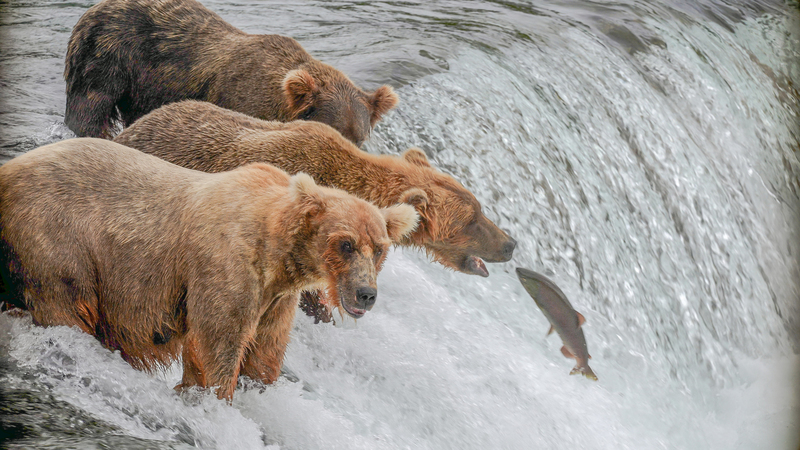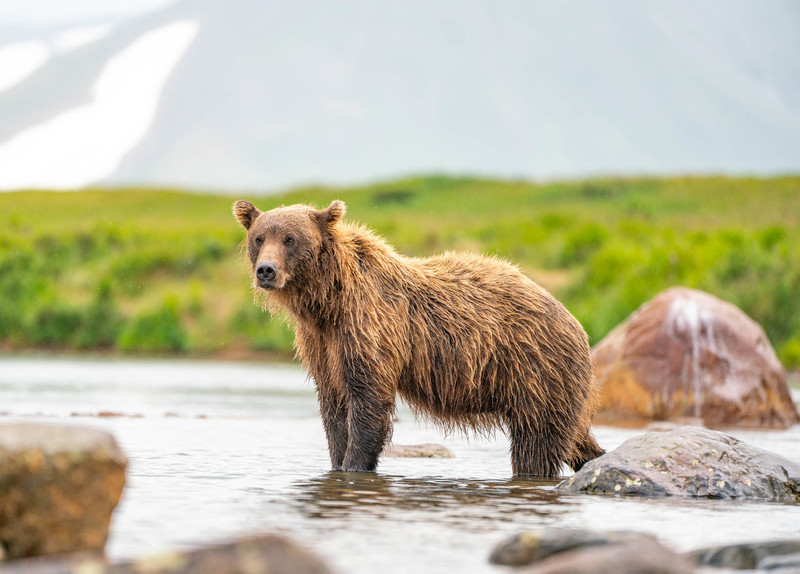
Homer Alaska Bear Viewing
ABOUT BEAR VIEWING!
Species Info: Exploring Alaska's Bears
Alaska is home to two prominent bear species: grizzly bears and coastal brown bears. The coastal brown bear, a subspecies of the brown bear, reigns supreme as the largest of its kind in the world. Known for their impressive size and coastal adaptations, these bears are a sight to behold as they roam the rugged landscapes in search of their favorite delicacy: salmon.
Habitat: Into the Wild
The sprawling wilderness of Alaska serves as the perfect backdrop for bear viewing. From vast coastal plains to remote river valleys, bears find refuge in diverse habitats across the state. Rivers teem with salmon during the summer months, drawing bears to prime fishing spots where they showcase their remarkable fishing prowess. Whether it's the lush rainforests of the Southeast or the expansive tundra of the Arctic, Alaska's landscapes offer a glimpse into the bears' natural world.
Why Alaska: The Ultimate Bear Haven
What sets Alaska apart as a premier bear viewing destination? It's the sheer abundance of bears and the unspoiled wilderness that they call home. Alaska boasts one of the largest bear populations in the United States, providing ample opportunities for encounters with these magnificent creatures. Moreover, the state's commitment to conservation ensures that bear habitats remain protected for generations to come, making it a haven for both bears and wildlife enthusiasts alike.
Photography Opportunities: Capturing Moments in the Wild
For photographers, bear viewing in Alaska is a dream come true. From dramatic landscapes to intimate bear encounters, every moment presents a unique photo opportunity. Whether capturing a bear's majestic silhouette against a backdrop of snow-capped peaks or zooming in on the intricate details of a bear's fishing technique, Alaska's natural beauty provides the perfect canvas for stunning wildlife photography.
Tours: Guided Adventures into Bear Country
Embarking on a bear viewing tour is the best way to experience Alaska's wildlife up close while ensuring minimal impact on the bears and their habitat. Guided tours offer a range of options, from boat excursions along coastal waters to fly-in adventures deep into the wilderness. Knowledgeable guides accompany visitors, providing insights into bear behavior, ecology, and conservation efforts. With safety and conservation at the forefront, these tours offer a once-in-a-lifetime opportunity to witness the wonders of Alaska's bear country.




Our Planes

N254AW
de Havilland / Viking Aircraft
Model: DHC-3T Otter
Year: 1956
Length: 41 ft
Wingspan: 58 ft
Powerplant: Garrett PPE-331-10
Horsepower: 900
Payload: up to 2000 lbs Includes pilot and fuel
# Pax: 9
Speed: 115 Knots

N5755G
Cessna Aircraft Company
Model: C-206G
Year: 1976
Length: 28 ft
Wingspan: 36 ft
Powerplant: Continental IO-550
Horsepower: 300
Payload: up to 850 lbs Includes pilot and fuel
# Pax: 5
Speed: 120 Knots

N603DA
de Havilland / Viking Aircraft
Model: DHC-2T MKIII Beaver
Year: 1957
Length: 41 ft
Wingspan: 58 ft
Powerplant: Pratt & Whitney PT6-34
Horsepower: 685
Payload: up to 1250 lbs Includes pilot and fuel
# Pax: 7
Speed: 125 Knots

N906JS
de Havilland / Viking Aircraft
Model: DHC-2T MKIII Beaver
Year: 1962
Length: 30 ft
Wingspan: 48 ft
Powerplant: Pratt & Whitney PT6-34
Horsepower: 685
Payload: up to 1250 lbs Includes pilot and fuel
# Pax: 7
Speed: 125 Knots




















































